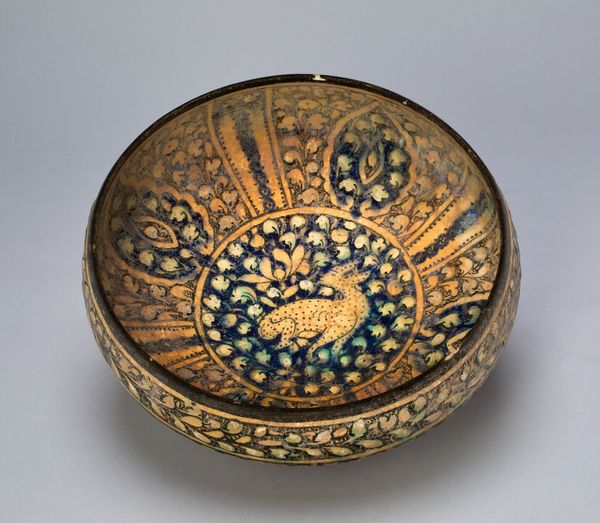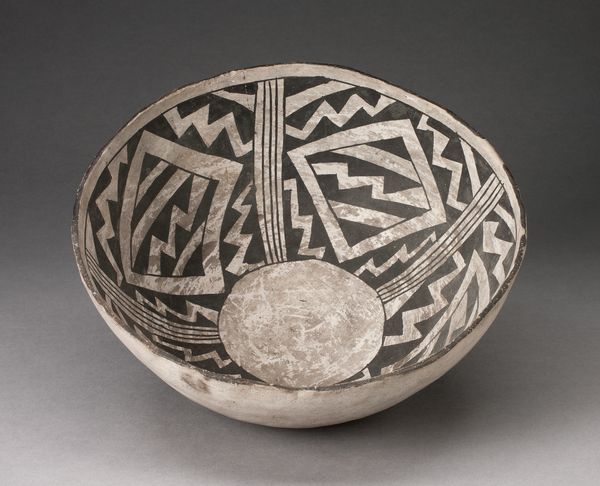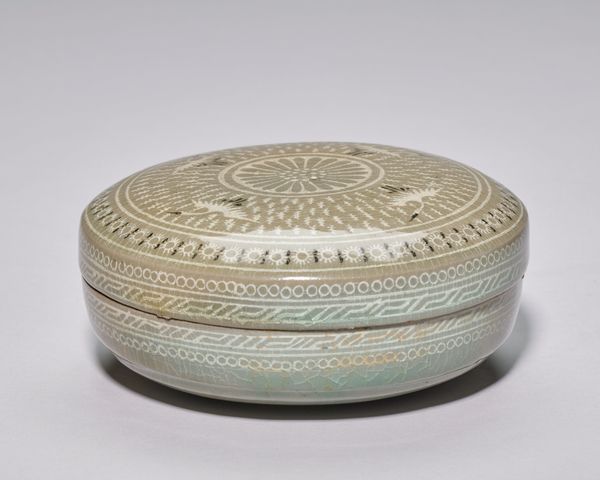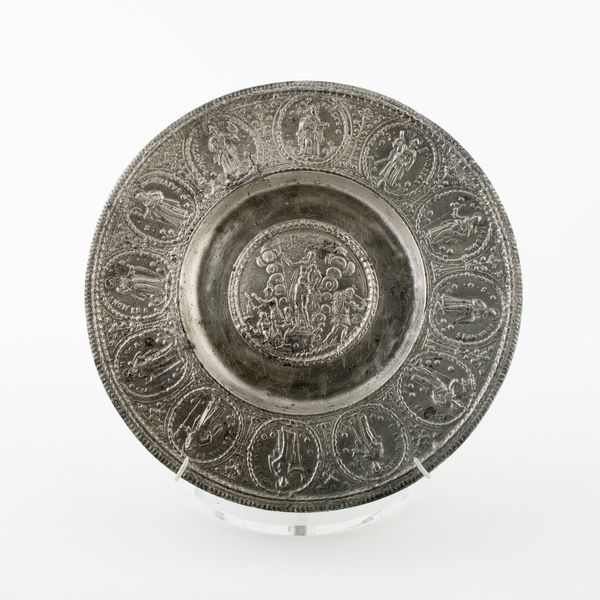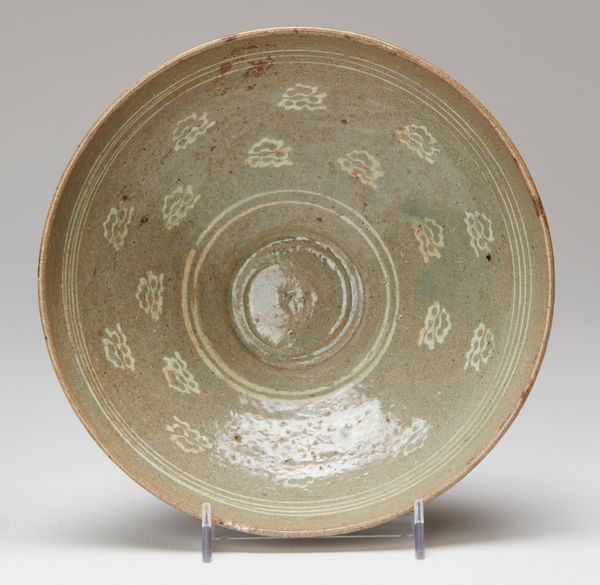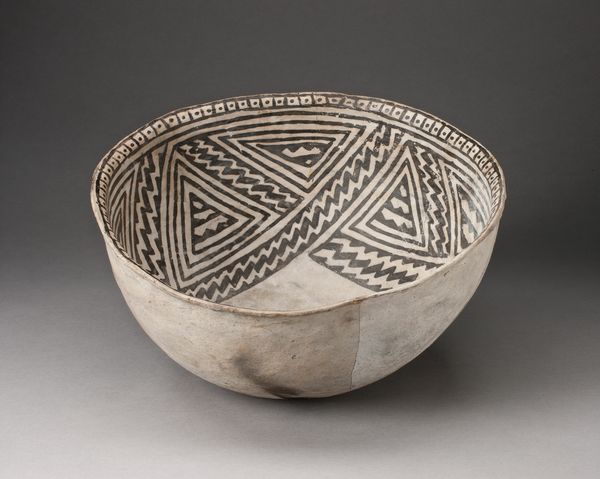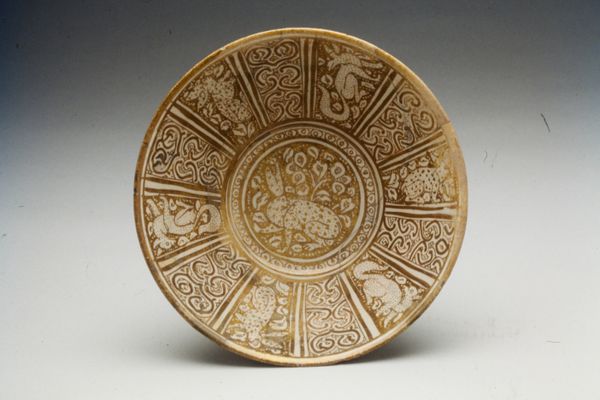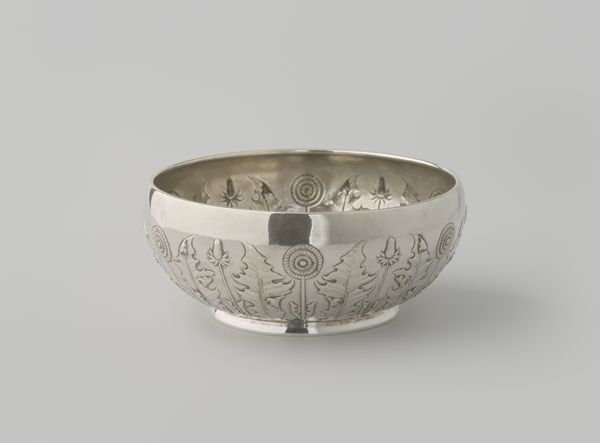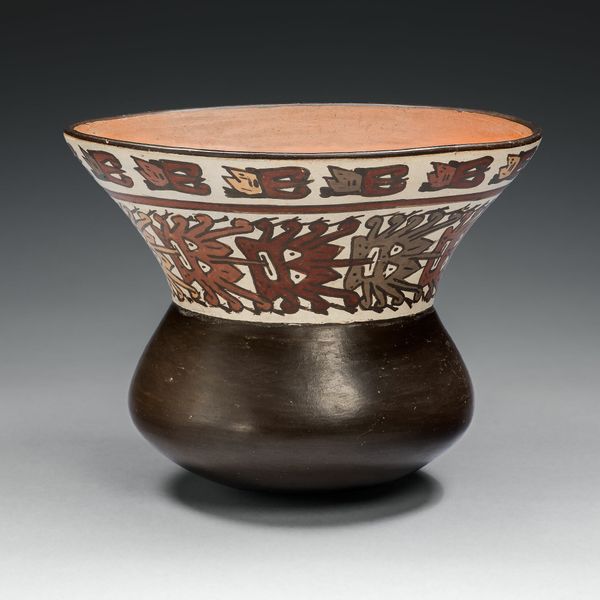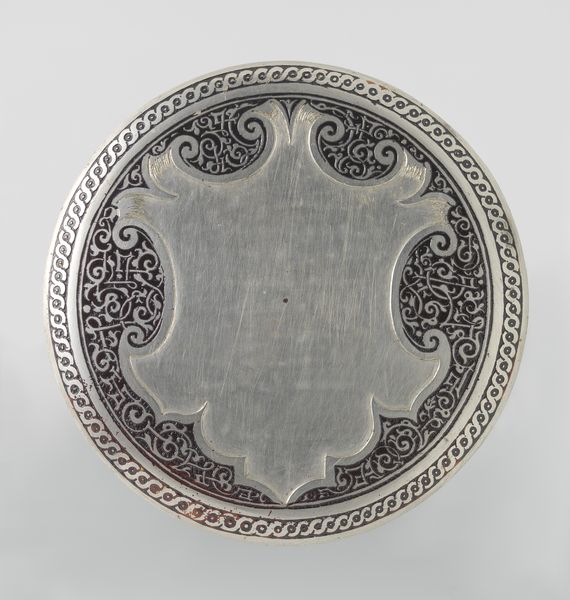
Bowl with Birds Ilkhanid dynasty (1256–1353), late 13th/early 14th century
0:00
0:00
ceramic
#
asian-art
#
ceramic
#
ceramic
#
islamic-art
#
decorative-art
Dimensions: H: 10 cm; Diam:21.3 cm (H: 4 in. Diam: 8 1/2 in.
Copyright: Public Domain
Curator: Welcome. Before us sits a ceramic bowl crafted during the Ilkhanid dynasty, sometime in the late 13th or early 14th century. Notice its restrained palette. Editor: It feels rather muted, almost ghostly. The overall effect is quite calming. It’s a small bowl, so it imparts intimacy despite the precision of the imagery. Curator: Observe how the decorator employed a primarily linear approach in defining the forms. Each carefully inscribed line demarcates shape, imbuing the stylized birds and foliage with structured rhythm. Note the iterative geometry along the rim, enhancing compositional integrity. Editor: Birds, so often a symbol of freedom and the soul's journey. In many cultures, they bridge the earthly and spiritual realms, suggesting aspiration and transcendence. Considering the time of its creation, how would those symbols translate to this bowl’s owner and the larger society of the Ilkhanid dynasty? Curator: Interesting thought. This era melded Persian traditions with Mongol influences. If we study its structure, a circular plan emphasizes wholeness and continuity. I also find value in the symmetrical distribution of avian figures and botanic patterns to foster balanced formal relationships. Editor: Yes, I can see a central focus here. The imagery looks purposefully arranged, each motif repeating and acting in visual relation with the other images. Each time I see that arrangement, my imagination sees memories, history, and something lasting about the culture from which it comes. Curator: This brings us back to understanding the interplay between form and culture; between abstract composition and cultural iconography, thus encouraging a multifaceted encounter. Editor: Precisely. In decoding a bowl's decoration, we glimpse not merely what they saw, but also their enduring aspirations. Thank you for unraveling both.
Comments
No comments
Be the first to comment and join the conversation on the ultimate creative platform.
